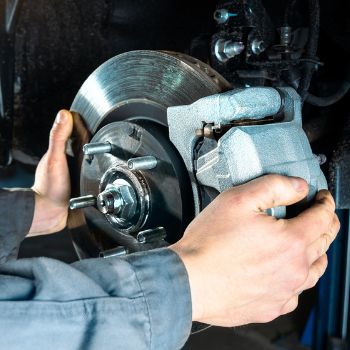 Your car's braking system is more than just a mechanical component—it plays a vital role in your safety and the safety of others on the road. From brake pads to fluid levels, several factors can impact how well your brakes function.
Your car's braking system is more than just a mechanical component—it plays a vital role in your safety and the safety of others on the road. From brake pads to fluid levels, several factors can impact how well your brakes function.
One common habit that many drivers unknowingly do is "riding the brake"—keeping their foot on the pedal for extended periods. This not only speeds up wear and tear but also affects the overall performance of your vehicle. In this article, we'll explore how your brakes work, the consequences of riding the brake, and what you can do instead to protect your car and stay safe.
How Your Brake System Works
Whether your car has disc or drum brakes, pressing the brake pedal sends hydraulic pressure through the system to the calipers or wheel cylinders. This pressure causes the brake pads to press against the rotors or drums, creating friction that slows down or stops your vehicle. The process is repeated every time you apply the brakes.
Over time, the constant friction wears down the brake pads, producing brake dust as a byproduct. Larger vehicles, like trucks or SUVs, require more force to stop, which means more heat and faster wear. When the brakes are not in use, air flow over the rotors helps cool them down. However, if you're constantly applying the brake, this cooling effect is disrupted, leading to overheating and potential damage.
The Consequences of Riding the Brake
Riding the brake doesn't just affect the pads and rotors—it impacts the entire system. Here’s what happens:
- Increased contact between the brake pads and rotor leads to premature wear on both components.
- Excessive heat can cause brake fluid to boil, damaging hoses, calipers, and other parts.
- Brake pedal fade occurs when the system loses effectiveness, increasing stopping distance and risking accidents.
- Air bubbles can form between the pads and rotors, reducing friction and slowing down your vehicle.
- Prolonged misuse may eventually lead to complete brake failure.
Additionally, riding the brake can cause glazing on the rotors or drums, which reduces friction and makes it harder to stop. This often requires resurfacing or replacing these parts. Beyond mechanical issues, it can also confuse other drivers, reduce fuel efficiency, and create dangerous situations—especially when driving downhill.
Smart Alternatives to Riding the Brake
If you live in a hilly area or frequently drive on inclines, there are better ways to manage your braking:
- Shift into a lower gear before descending a hill to let the engine help slow the vehicle.
- Apply the brakes briefly (no more than five seconds) if your car starts to speed up.
- Keep your foot off the gas while going downhill. Some cars have an overdrive button that can assist with engine braking.
- Let the ABS (Anti-lock Braking System) engage if needed to prevent wheel lockup.
In winter conditions, it’s sometimes necessary to use the brakes when roads are icy or snowy. Just be sure to maintain a safe distance from the car ahead and apply gentle, consistent pressure to avoid losing control. If your car begins to skid, the ABS will activate to help you regain steering control.
Regular maintenance is key to keeping your brakes in top condition. If you're concerned about wear or notice any unusual noises or vibrations, don’t wait—have a professional inspect your system. At DaSilva’s Auto Body, our experienced technicians can check all components and recommend the right repairs or replacements. Contact our Naugatuck location today to schedule a service appointment and keep your brakes working safely and efficiently.
Alumina Ceramic,High Purity Alumina,Aluminium Oxide Ceramic,Alumina Oxide Ceramic
Yixing Xiangyang Jiujiu Chinaware Industry Co., Ltd. , https://www.xyjjceramic.com
![<?echo $_SERVER['SERVER_NAME'];?>](/template/twentyseventeen/skin/images/header.jpg)